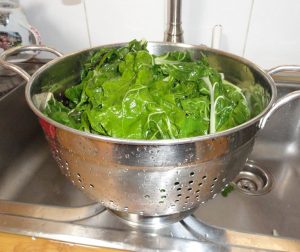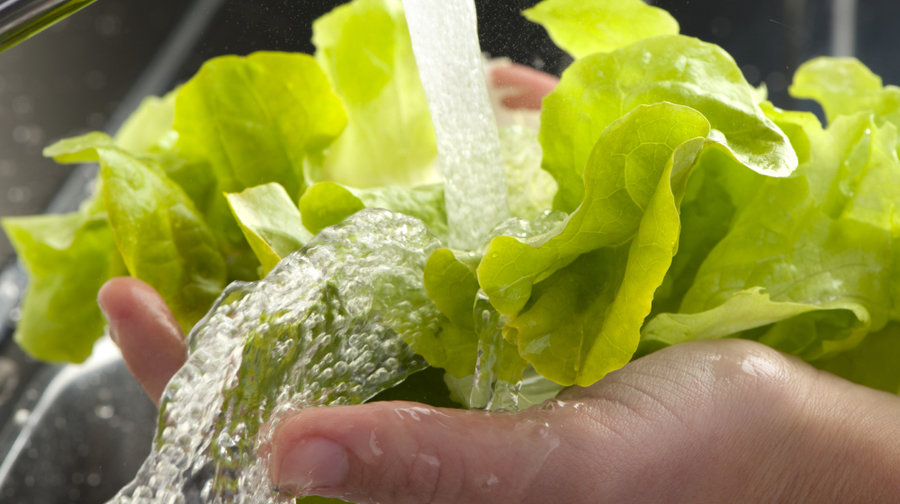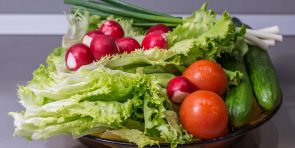Expert Tips to Clean and Store Green Leafy Vegetables
Green leafy vegetables are a storehouse of vitamins and nutrients. The presence of vitamin A, K, C, iron, pectin, and folate are some of the essential nutrients present in green leafy vegetables. However, before you decide to include green leafy vegetables in your diet, it is necessary to know the correct way to wash greens. The surface of vegetables contains a lot of pesticides and chemicals which can lead to health problems. Considering the factor, it is important to wash green vegetables in the right way to make them fit for consumption.
6 Tips to Wash Green Leafy Vegetables
1. Wash your hands
Though we wash our hands before starting any type of cooking, many of us don’t have the habit of washing our hands before handling vegetables. The reason is most of us think that we will wash the vegetables eventually before cooking. However, when it comes to green leafy vegetables, it is necessary to wash your hands with soap and water for at least 20 seconds.
2. Clean the Surface of the Kitchen

This is another mistake that most of us make when washing fruits and vegetables. The surface of the kitchen slab may look clean, however, it may be infested with germs that can lead to foodborne diseases. Considering this factor, make sure that you clean the surface thoroughly to avoid diseases.
3. Cut Away the Stem or Damaged Leaves
Many of us tend to remove the stem or damaged leaves after washing the vegetables. However, the common habit contaminates the leafy vegetables that you have already washed. The reason is the stems of green vegetables accumulate more pesticides and chemicals than the leaves. Cutting away the stems and damaged leaves helps in removing the contaminated parts of the vegetable and makes it safe for consumption.
4. Use Vegetable and Fruit Cleaner

The third step is to thoroughly wash the green leafy vegetables. However, instead of washing leafy vegetables under running tap water, use a vegetable and fruit cleaner from KENT. The reason is running water can’t remove the residue of pesticides and chemicals present on the surface of the leafy vegetables. The vegetable and fruit cleaner from KENT uses powerful ozone disinfection technology to remove pesticides insecticides and other pollutants from vegetables. The ozone disinfection technology sterilizes the vegetables to make them safe for consumption.
5. Drain Excess Water

Remove the greens from the bowl filled with water and transfer them to a colander. This will help in draining the excess water present in the green vegetables. After draining the leafy vegetables, use a paper towel to pat the leaves dry. Avoid washing green leafy vegetables with soap water or bleach as these leave residues which are not safe to consume.
Also Read: Health Risks Associated With Harmful Chemicals In Fruits & Vegetables
6. Store them Properly
This is another mistake that most of us make. Proper storage can go a long way in keeping the greens fresh and also reduce the chances of contamination. Wrap the leafy vegetables in a dry paper towel or clean kitchen towel and store them in a zip-locked bag.
Last Few Words
Green leafy vegetables are a great addition to your diet, however, without proper cleaning, they may do more harm than good. Washing green leafy vegetables don’t serve the purpose as it doesn’t remove the harmful chemicals. As a result, it is necessary to use a vegetable and fruit cleaner to remove the chemicals and pesticides present on the surface of the food items. Click here to find out more about vegetable and fruit cleaners.
Frequently Ask Questions
1. What is the best way to store green leafy vegetables?
To store green leafy vegetables, start by removing any damaged or wilted leaves. Rinse them gently under cold water and allow them to dry completely. Wrap the greens loosely in a paper towel to absorb excess moisture and place them in a resealable plastic bag or an airtight container. Make sure to squeeze out any excess air before sealing. Store them in the vegetable crisper of your refrigerator, ideally at a temperature of around 32 to 40°F (0 to 4°C). Using this method will help preserve the freshness and crispness of the greens for a longer period.
2. How do you clean vegetables before storing?
Before storing vegetables, it’s important to clean them properly. Start by rinsing the vegetables under cold running water to remove any dirt, debris, or pesticide residue. Use a vegetable brush for harder vegetables like potatoes or carrots to remove stubborn dirt. For leafy greens, separate the leaves and rinse them individually. Avoid using soap or detergent as they can leave behind residues. Once cleaned, pat the vegetables dry with a clean kitchen towel or paper towels to remove excess moisture. Properly cleaning vegetables before storing helps remove impurities and prolongs their freshness.
3. What is the best way to wash greens?
To wash greens effectively, fill a large bowl or clean sink with cold water. Submerge the greens in the water and swish them around gently to loosen any dirt or debris. You can also add a splash of vinegar or lemon juice to the water to help remove bacteria. After washing, remove the greens from the water and rinse them under running water to ensure all dirt and cleaning agents are removed. Shake off excess water or use a salad spinner to dry the greens before using or storing them. Properly washing greens helps remove impurities and ensures they are safe to consume.





Thank you for sharing your info. I really appreciate your efforts and I am waitinhg for your next write ups thanks once again.
Dear Sir,
Thanks for your valuable feedback. Keep reading KENT Blog for more motivation on staying healthy!
Regards,
Team Kent